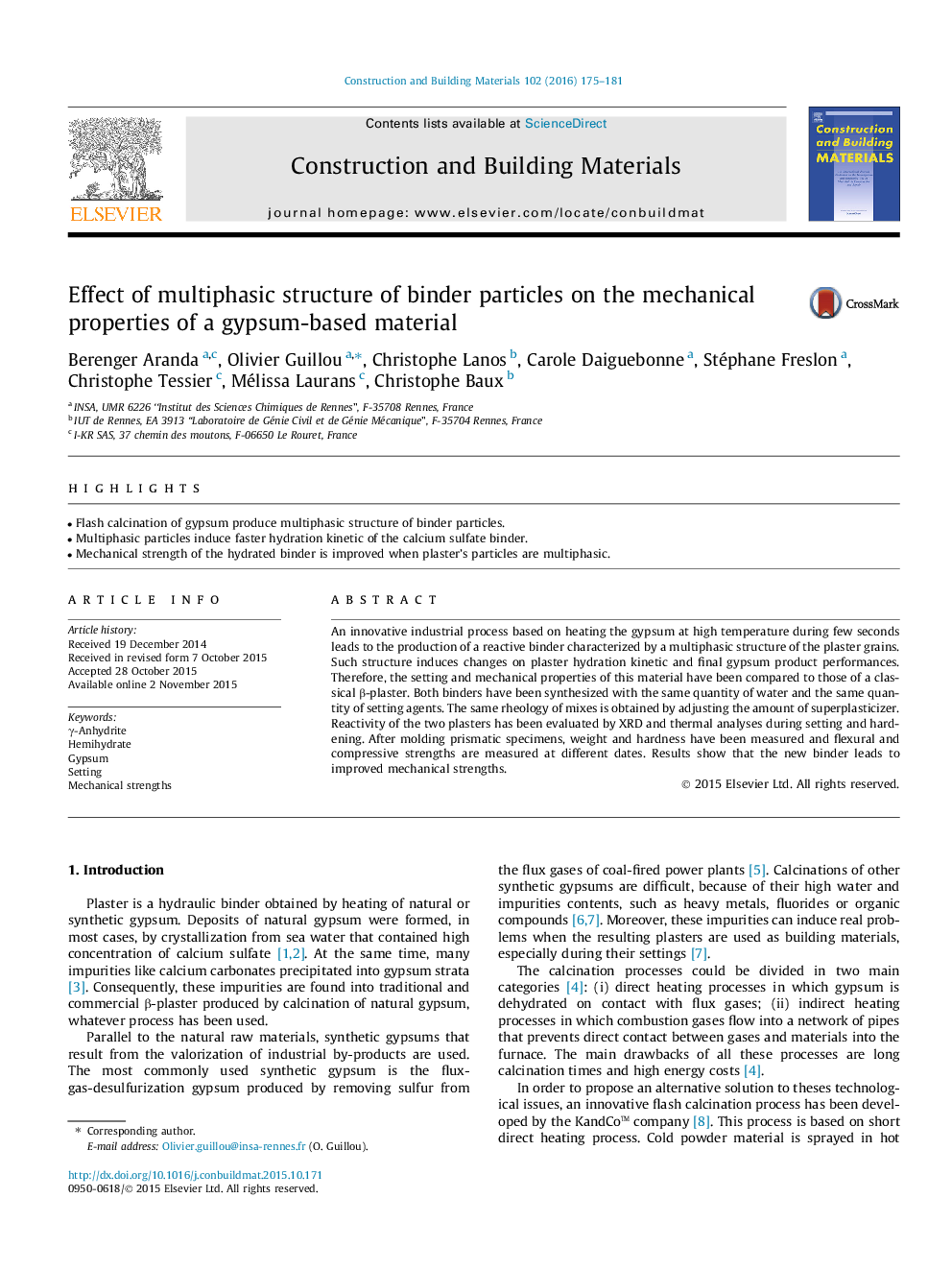| Article ID | Journal | Published Year | Pages | File Type |
|---|---|---|---|---|
| 10285015 | Construction and Building Materials | 2016 | 7 Pages |
Abstract
An innovative industrial process based on heating the gypsum at high temperature during few seconds leads to the production of a reactive binder characterized by a multiphasic structure of the plaster grains. Such structure induces changes on plaster hydration kinetic and final gypsum product performances. Therefore, the setting and mechanical properties of this material have been compared to those of a classical β-plaster. Both binders have been synthesized with the same quantity of water and the same quantity of setting agents. The same rheology of mixes is obtained by adjusting the amount of superplasticizer. Reactivity of the two plasters has been evaluated by XRD and thermal analyses during setting and hardening. After molding prismatic specimens, weight and hardness have been measured and flexural and compressive strengths are measured at different dates. Results show that the new binder leads to improved mechanical strengths.
Related Topics
Physical Sciences and Engineering
Engineering
Civil and Structural Engineering
Authors
Berenger Aranda, Olivier Guillou, Christophe Lanos, Carole Daiguebonne, Stéphane Freslon, Christophe Tessier, Mélissa Laurans, Christophe Baux,
